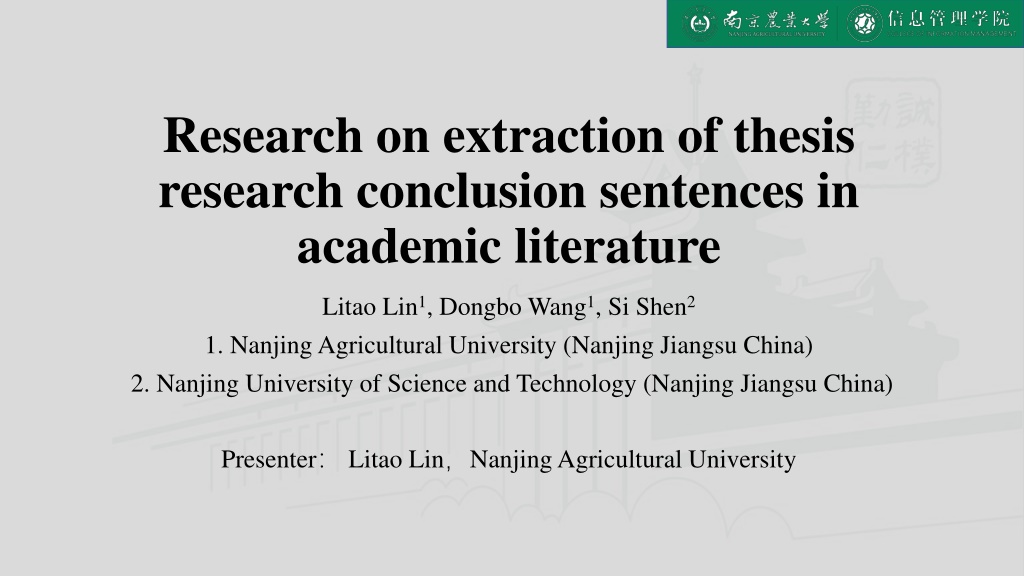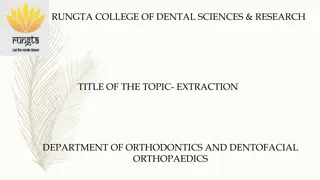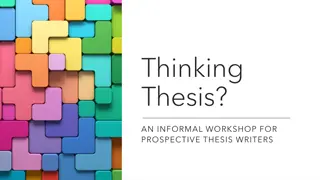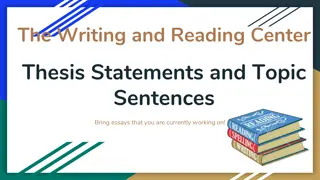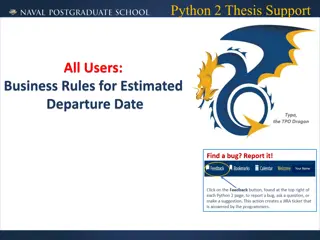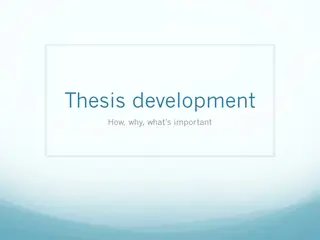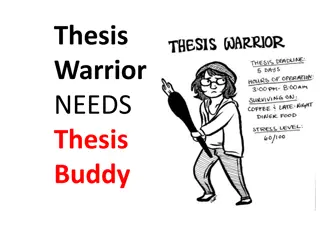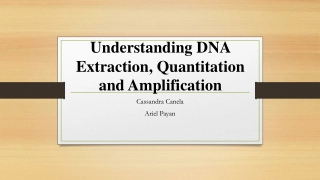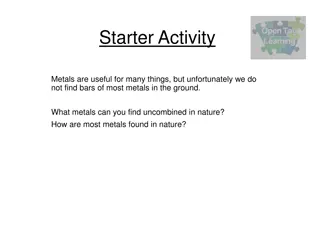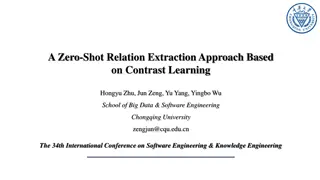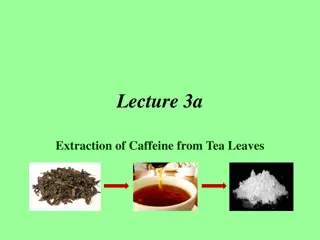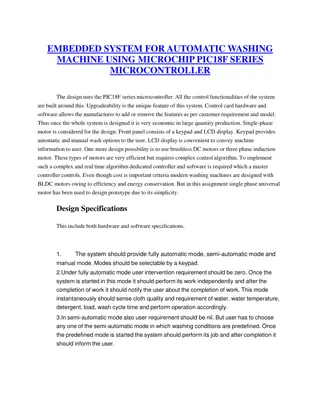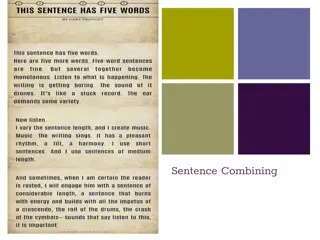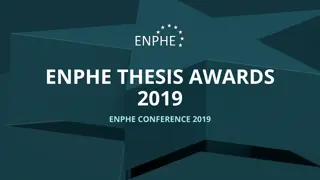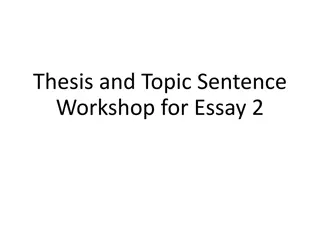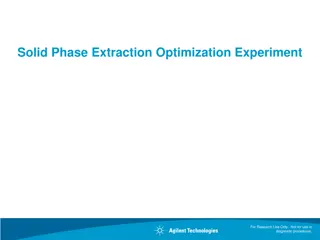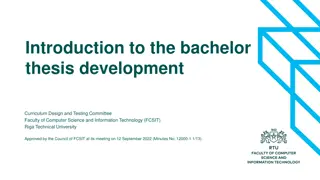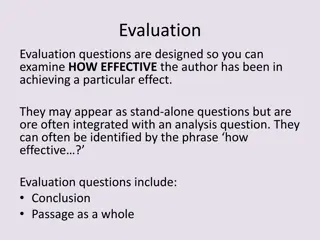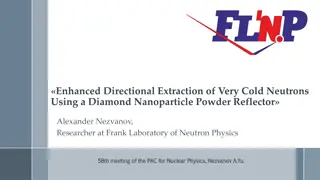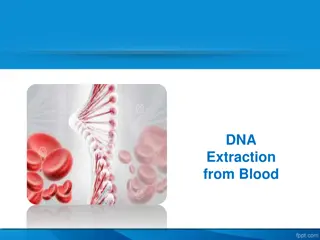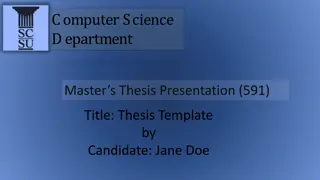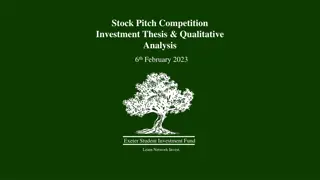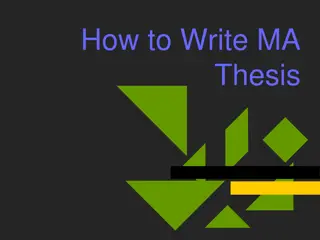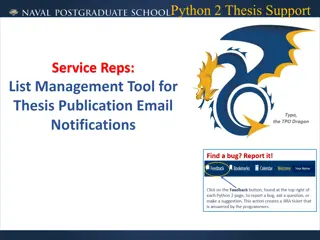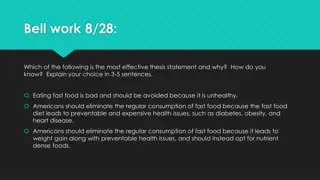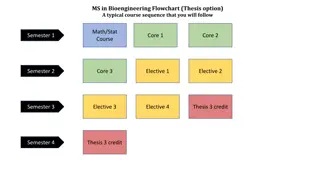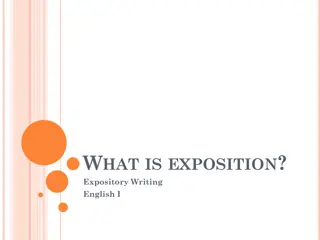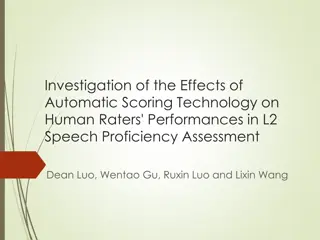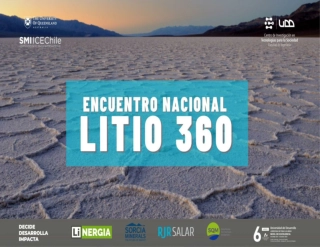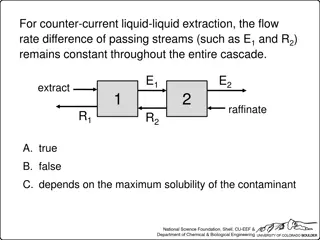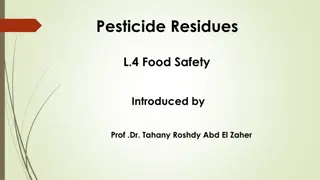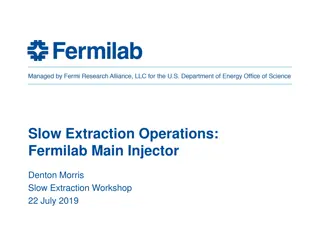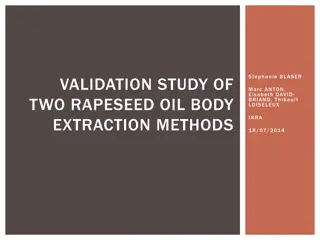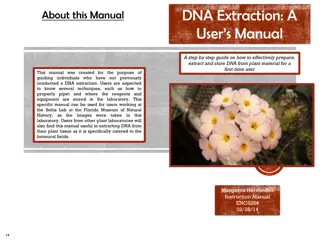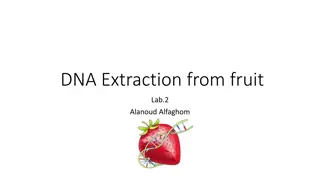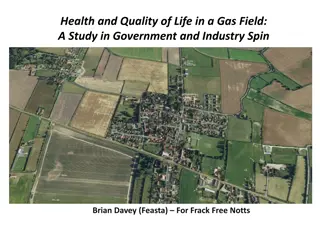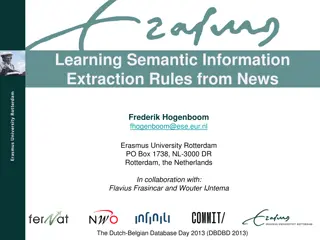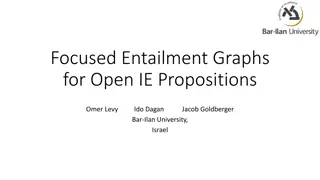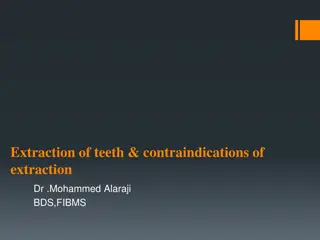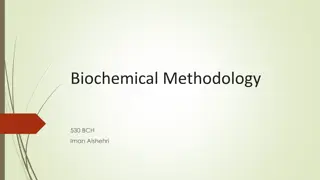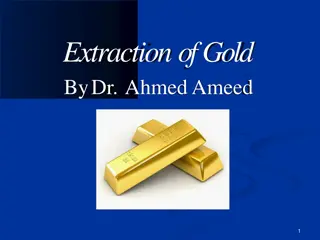Automatic Extraction Model of Thesis Research Conclusion Sentences
Full-text academic literature contains rich data that can be analyzed using machine learning techniques. This research focuses on extracting thesis research conclusion sentences automatically to enhance summarization processes. The study involves data processing, annotation, and creating discriminant criteria for identifying research conclusion sentences. Strategies such as negatively sampling non-research conclusion sentences were employed to balance the dataset. The research aims to develop a model based on deep learning techniques for extracting thesis research conclusions effectively.
Download Presentation

Please find below an Image/Link to download the presentation.
The content on the website is provided AS IS for your information and personal use only. It may not be sold, licensed, or shared on other websites without obtaining consent from the author. Download presentation by click this link. If you encounter any issues during the download, it is possible that the publisher has removed the file from their server.
E N D
Presentation Transcript
Research on extraction of thesis research conclusion sentences in academic literature Litao Lin1, Dongbo Wang1, Si Shen2 1. Nanjing Agricultural University (Nanjing Jiangsu China) 2. Nanjing University of Science and Technology (Nanjing Jiangsu China) Presenter Litao Lin Nanjing Agricultural University
1 Introduction 1 Introduction Research Background Full-text data of academic literature mainly contains external characteristics and content characteristics. Increasingly rich full-text data and evolving machine learning and deep learning techniques allow researchers to investigate the content characteristics of academic literature in depth. Automatically extracting thesis research conclusion sentences can promote the development of automatic summarization. Purpose of the research This research attempts to construct an automatic extraction model of the thesis research conclusion sentence based on the deep learning techniques.
2 Corpus and Method 2 Corpus and Method Corpus (1) Data source All the full texts of academic papers published in JASIST from 2017 to 2020 by using self-made Python program. (2) Data processing Using NLTK module to segment the full text of the paper in sentence units. (3) Data annotation 7 postgraduates majoring in information science manually annotated the sentences, and the experimenter completes the final review.
2 Corpus and Method 2 Corpus and Method Discriminant criteria of the thesis research conclusion sentence: (1) Semantically, the content of a sentence is a concise summary of the above or the following and the sentence does not appear in the introduction section. (2) The sentence is not a straightforward description of the data of the experimental results, but it can be based on the reasoning and qualitative interpretation of the experimental results. (3) The subject of the sentence is not an object from a cited literature, such as a citation author.
2 Corpus and Method 2 Corpus and Method In order to alleviate the problem of data imbalance, we negatively sampled non-research conclusion sentences to increase the proportion of thesis research conclusion sentences to 8.9%. The basic information of the final corpus is shown in Table 1. Table 1. Basic Information of the Corpus Num. Type Count 502 54,479 4,870 Total article Total Sentences 1 2 Thesis research conclusion sentences 3 Average number of marked sentences in each article 9.7 4 Average words number in each sentences 27.99 5 The longest sentence words number 255 6
2 2 Corpus and Method Corpus and Method Method (1) SVM Svm is called support vector machine and it is a classic model for text classification. In its simplest form, an SVM is able to perform a binary classification finding the best separating hyperplane between two linearly separable classes. (2) SciBERT SciBERT (Beltagy et al., 2019) is a deep learning model based on the BERT architecture (Devlin et al., 2018), which is trained on the full text corpus of 1.14 million scientific and technological documents. SciBERT uses the same configuration and size as BERT-base (Devlin et al., 2018) in the construction process, and it performs better than BERT-Base on natural language processing tasks in scientific literature. [1] Beltagy, I., Lo, K., & Cohan, A. (2019). SciBERT: Pretrained Contextualized Embeddings for Scientific Text [2] Devlin, J., Chang, M. W., Lee, K., & Toutanova, K. (2018). BERT: Pre-training of Deep Bidirectional Transformers for Language Understanding
3 3 Experiment Experiment Result SVM model has a high precision rate for extracting thesis research conclusion sentences and a low recall rate. The SciBERT model has a relatively high recall rate and a relatively low precision rate. From the perspective of the average F1-Value, the performance of SVM and SciBERT are both around 70%. SciBERT is relatively superior and the optimal F1-value is 77.51%. Table 2. Results of 10-Fold Cross-Validation Model Precision Recall F1-Value MAX 85.86% 78.61% 77.51% SciBERT MIN 73.41% 44.13% 58.22% Recognition errors of the SciBERT that have been discovered: Recognizing the sentence describing the graph or table as the thesis research conclusion sentence. Recognizing research hypothesis sentences as thesis research conclusion sentences. Recognizing citation conclusion sentences without quotation mark as thesis sentence. AVG 79.86% 64.51% 70.74% MAX 98.19% 64.51% 77.03% SVM MIN 90.37% 37.08% 53.80% AVG 95.97% 52.14% 67.24% research conclusion
4 Conclusion & Future Work 4 Conclusion & Future Work Conclusion SciBERT is more suitable for extracting thesis conclusion sentences and the optimal F1-value is 77.51%. This research provides an idea for extracting thesis research conclusion sentences in academic full text. Future Work (1) Realizing data augmentation by adding positive examples. (2) Reference resolution should be carried out. (3) Make a precise definition of the research conclusion sentence from the perspective of linguistics.
THANKS Contact us: Litao Lin: 2020114016@njau.edu.cn Dongbo Wang: db.wang@njau.edu.cn Si Shen: shensi@njust.edu.cn
